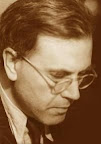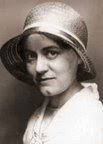Following the Heart of Love
 St. Margaret Mary Alacoque, Virgin (16 Oct)
St. Margaret Mary Alacoque, Virgin (16 Oct)
St. Ignatius of Antioch, Martyr and Bishop (17 Oct)
At first glance, these two saints have little in common. She was a Frenchwoman and a nun in who died peacefully in a cloister during the 17th century. He was a Syrian bishop fed to wild beasts in Rome at the beginning of the 2nd. An inspection is revealing.
Margaret Mary lived in a convent ravaged by Jansenism in a country sinking under the weight of the same spiritual illness. Jansenism is a complex heresy that boils down to keeping a very strict rule (the stricter, the better, they thought), with failure to do so adequately spelling out eternal damnation. This thinking led to a very harsh and judgmental attitude toward anyone who falls short. That cold and harsh attitude leads inevitably toward the withering of love. With this heresy, all that remains of authentic Christianity is a set of rules and prideful people giving hateful looks to everyone else. It was in this spiritual climate that Our Lord revealed Himself to St. Margaret Mary and showed to her His living, loving Sacred Heart. His heart is a heart full of love, and all who behold it must make the barest and starkest of choices: to accept or to reject that love. St. Margaret Mary chose love. That love transformed her. Since her devotion to the Sacred Heart of Jesus began to spread among her sisters, throughout France, and around the world, He has transformed hearts wherever He has been loved.
Ignatius, elected bishop of Antioch toward the end of the first Christian century, must have been aware of the danger he was in. He was the ringleader of a largish gathering of a suspicious cult. Yet, he had beheld the love of Christ and been transformed by that love as well. In fact, he was so transformed that nothing else mattered. He fell so in love with Jesus, whom his eyes never beheld in this life, that he also began to love the things that Jesus loved. He loved little children, he loved wayward sinners, he loved hard-headed Christians, he even loved his enemies. Most dramatically, he loved suffering for the sake of saving souls. So it was that as he was being dragged in chains to Rome to be murdered at the Emperor's command, he begged his well-connected brothers-in-Christ living in Rome not to use their connections or their money to get him released. He had one desire left: to see Jesus. When the Rom an world began to get a clearer and clearer view of this sort of love, the "games" at which Christians were murdered stopped seeming so fun. The Roman world, full of violence, cold business relationships, and loveless lives, desperately craved the one thing they could not buy for themselves: love. When the Romans saw that Christians had it, very large numbers began to become Christians in a very short time.
an world began to get a clearer and clearer view of this sort of love, the "games" at which Christians were murdered stopped seeming so fun. The Roman world, full of violence, cold business relationships, and loveless lives, desperately craved the one thing they could not buy for themselves: love. When the Romans saw that Christians had it, very large numbers began to become Christians in a very short time.
If any of the symptoms of the lovelessness disease sound familiar, if any of it seems applicable to our life or world today, we must consider that perhaps the disease is the same. That's good news, because it means the treatment is the same. Let us turn to the Sacred Heart of Jesus and ask Him to teach us to love.
Margaret Mary lived in a convent ravaged by Jansenism in a country sinking under the weight of the same spiritual illness. Jansenism is a complex heresy that boils down to keeping a very strict rule (the stricter, the better, they thought), with failure to do so adequately spelling out eternal damnation. This thinking led to a very harsh and judgmental attitude toward anyone who falls short. That cold and harsh attitude leads inevitably toward the withering of love. With this heresy, all that remains of authentic Christianity is a set of rules and prideful people giving hateful looks to everyone else. It was in this spiritual climate that Our Lord revealed Himself to St. Margaret Mary and showed to her His living, loving Sacred Heart. His heart is a heart full of love, and all who behold it must make the barest and starkest of choices: to accept or to reject that love. St. Margaret Mary chose love. That love transformed her. Since her devotion to the Sacred Heart of Jesus began to spread among her sisters, throughout France, and around the world, He has transformed hearts wherever He has been loved.
Ignatius, elected bishop of Antioch toward the end of the first Christian century, must have been aware of the danger he was in. He was the ringleader of a largish gathering of a suspicious cult. Yet, he had beheld the love of Christ and been transformed by that love as well. In fact, he was so transformed that nothing else mattered. He fell so in love with Jesus, whom his eyes never beheld in this life, that he also began to love the things that Jesus loved. He loved little children, he loved wayward sinners, he loved hard-headed Christians, he even loved his enemies. Most dramatically, he loved suffering for the sake of saving souls. So it was that as he was being dragged in chains to Rome to be murdered at the Emperor's command, he begged his well-connected brothers-in-Christ living in Rome not to use their connections or their money to get him released. He had one desire left: to see Jesus. When the Rom
 an world began to get a clearer and clearer view of this sort of love, the "games" at which Christians were murdered stopped seeming so fun. The Roman world, full of violence, cold business relationships, and loveless lives, desperately craved the one thing they could not buy for themselves: love. When the Romans saw that Christians had it, very large numbers began to become Christians in a very short time.
an world began to get a clearer and clearer view of this sort of love, the "games" at which Christians were murdered stopped seeming so fun. The Roman world, full of violence, cold business relationships, and loveless lives, desperately craved the one thing they could not buy for themselves: love. When the Romans saw that Christians had it, very large numbers began to become Christians in a very short time.If any of the symptoms of the lovelessness disease sound familiar, if any of it seems applicable to our life or world today, we must consider that perhaps the disease is the same. That's good news, because it means the treatment is the same. Let us turn to the Sacred Heart of Jesus and ask Him to teach us to love.
Sacred Heart of Jesus, make our heart like unto Thine.
St. Margaret Mary, pray for us.
St. Ignatius of Antioch, pray for us.























No comments:
Post a Comment